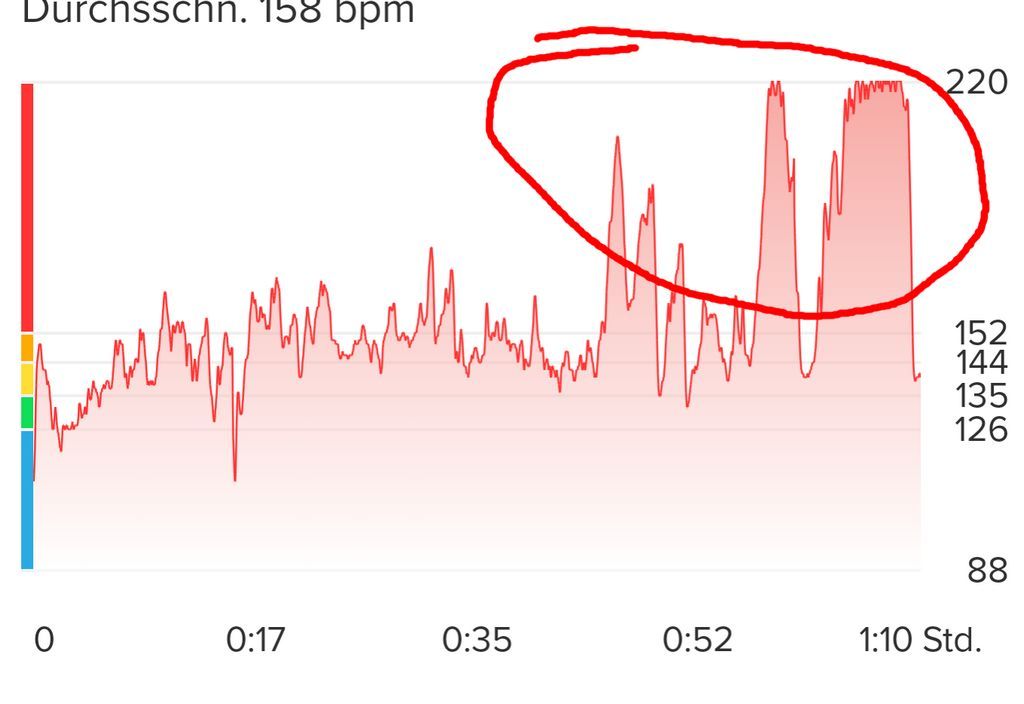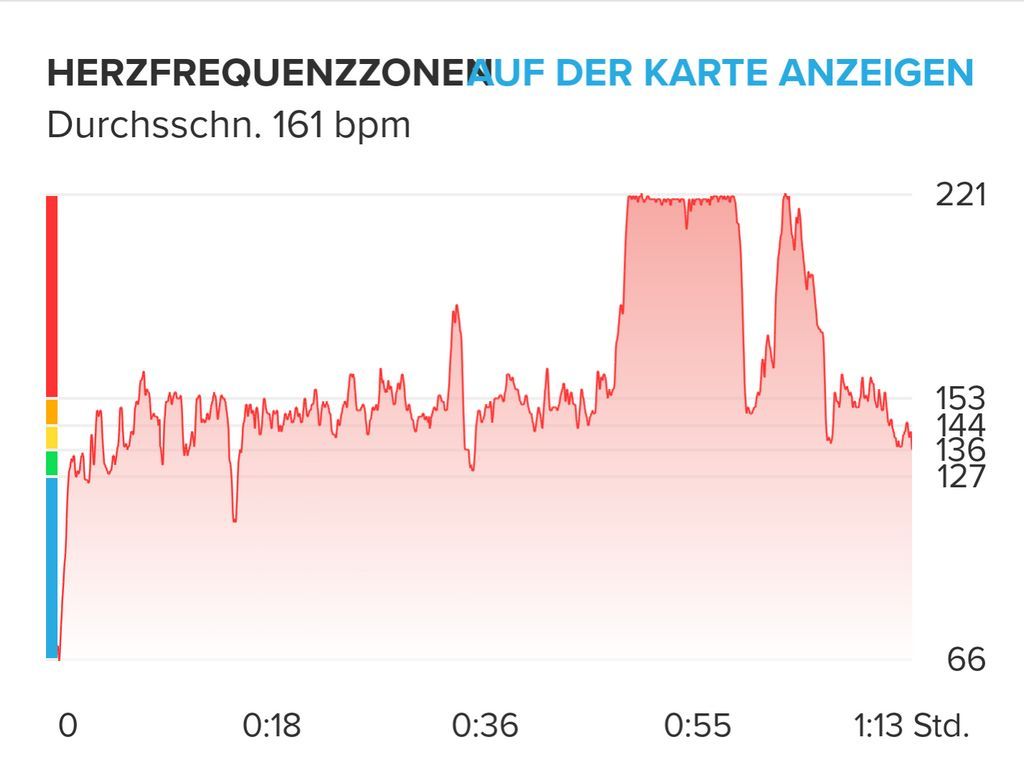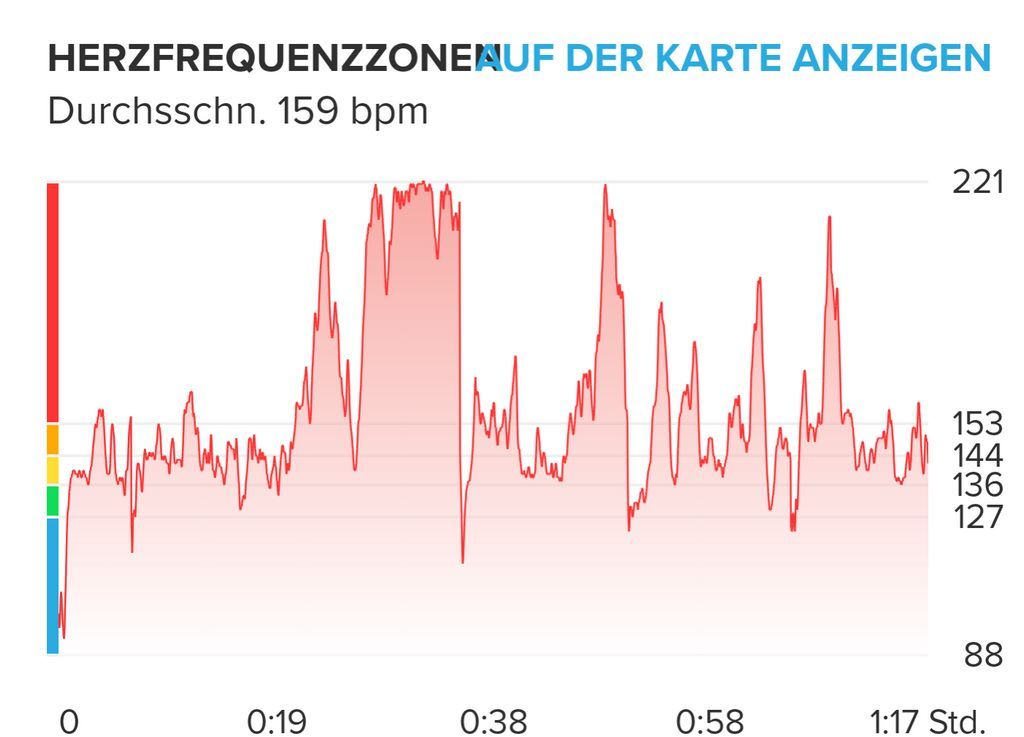S9B HF peaks during training
-
@reiner said in S9B HF peaks during training:
Nobody with experience on this topic?
Just want to check here until i contact support at next step.
Is this with the optical HR or using a chest strap?
-
@cosmecosta
Only with the optical, never with the strap. -
@reiner This has been discussed several times. With the S9, OHR is not very accurate, it works for some people but it doesn’t for a lot as well. For me it doesn’t work and I get readings like yours.
You can try to wear it tighter using a Velcro strap (people that uses this strap say that there is a big improvement.I do not think that you unit is faulty. If you want reliable HR readings you should use a strap.
-
@cosmecosta
Thanks for your answer!
I tried to messure the difference between optical HR and Strap when optical sensor delivers normal readings. From my experience there are only a couple percent deviation, for me as an amateur very okay.
But this kind of peaks are kompletly wrong, unusable at all.I just had contact to support chat, they confirmed this as a malfunction to me, next step i have to tri, is a hardreset via Suuntolink.
I only did a softreset bevore. -
I am very frustrated …
After hard reset the issue is still available.
Support told me everything is okay with my watch, because in the fist section of the training the result is valid. And the deviation on the end is triggered by me.Yes, it seems that wetness by sweating could be a reason for the issue.
But – In the first 4 monts of using the S9B, this deviation doesn’t exist, and my current sweating isn´t another sweating than a half year before. On my current trainings, I noticed that a very little bit of wetness by sweating is enough to produce the malfunction.I have the same wight, speed, skin, sweating, nothing changed like I bought this watch.
At that time the HR recording worked very well, and now the results are completely bad in every record.Are there runners here whose watch delivers good results despite sweat/wetness?
.
.
-
@reiner did you maybe change the position of watch on arm? Did ambient temperature change significantly in the last 4 months?
-
@reiner Do not get frustrated, really. The technology is what it is. I also do not think your watch is defective.
I do not know you but there are plenty of reasons that could lead to these “faulty” readings, like last four months we were in winter, so colder months and less sweating, maybe you have lost some weight and your wrist is thinner or your strap has got some elasticity and the watch now has more space to move…Besides S9B has never shined for its OHR. I only use the built in OHR for shorts walks or hikes and I have to wear it very tight to have some decent readings.From what I have read from other people, the velcro strap for the watch helps quite a lot to improve the OHR, but it seems that is quite difficult to buy.
My recommendation is to buy a chest or OHR strap. I use the polar OH1 arm band, it is very comfortable and very reliable. For chest straps I suggest you to buy the Suunto one or the Polar H10 or H9.
-
Not at first, but when I noticed the deviation, I tried different positions. Shure, there was strongly temperature changes in the last mounth, my gues was the cold also. In the last weeks the coldness was gone, and i notice that the deviation was still there.
-
@cosmecosta
Wow! One of your recommendations could be a soloution. Because i always use the same holes in the strap on my trainings. I tried to fit the strap very thigt (contrary to the manual) and the results are clearly better. No persistent 220HR until today, i am very relieved.
Its realy possible, the strap has lost some elasticity.To avoid a chest strap was the reason why i bought a HR watch. Bevore i was using a chest strap linked to my mobile phone. Sports Tracker since a very long time

I like the recommanded OH1 arm band, that could be a good alternative.
-
This sudden rise in HF but also dropping of HF during steady state training is something I see a few times per month. In training sessions I use the chest strap only. In the past it occured more. When changing to a Polar H10 chest strap the problem was gone for some time but it returned but in a lower frequency. Watch, chest strap and sensor were replaced by Suunto but gave no improvement. I never had these problems in my old Suunto T6c. I am now busy to get my Suunto T6c in working order again as I think it is a more reliable training watch. Partly as those very high or very low HF do not occur and also while the EPOC measurement/calculation is way better. In the Suunto T6c it increases and decreases in 1 unit steps. In the Suunto 9 it sometimes jump 5-10 EPOC units. This makes pacing of the training very difficult.

